NEALL '97
North East Association for Learning Laboratories
Taking Multimedia into the Twenty-first Century
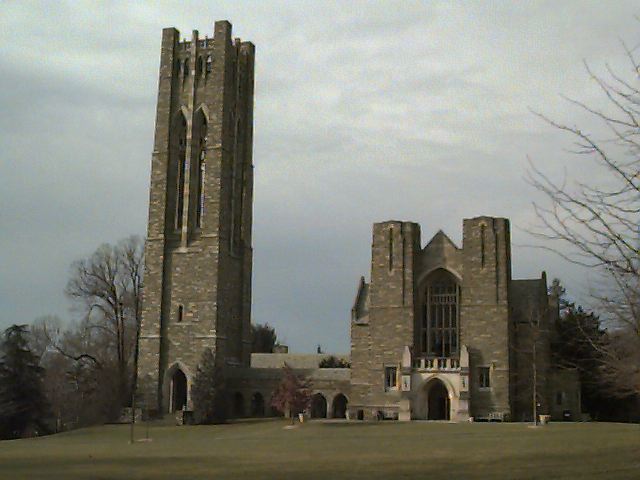
Swarthmore College
March 14 - 16, 1997
Friday, March 14
2:00 PM to 5:00 PM Scheuer Room, Kohlberg HallRegistration and Tour of Swarthmore Language Lab Software Demonstrations by Heinle & Heinle5:00 PM to 6:30 PM Scheuer Room
Reception hosted by Chester Technical Services
Saturday, March 15
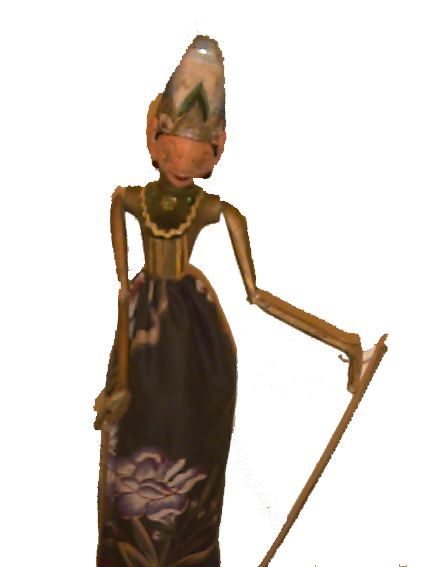 9:00 AM Scheuer Room, Kohlberg Hall
9:00 AM Scheuer Room, Kohlberg Hall
Conference Welcome Michael Jones, Swarthmore College and Robin Lawrason, NEALL Presi dent9:15 - 9:45 AM Scheuer Room
Mellon Grant Partnerships in Language Technology Developments. Janet Doner French Professor at Bryn Mawr College; Michael Jones, LRC Director Swarthmore College Faculty and staff from Swarthmore, Bryn Mawr, Haverford and Franklin & Marshall who attended a Mellon Technology Workshop at Middlebury will discuss their experiences. Could Middlebury serve as a model for other faculty workshops? What efforts at cooperation have emerged? A look at some work in progress and a discussion of training strategies with input from participants.9:45 - 10:30 AM Scheuer Room
Implementing the Mellon Grant - Three Perspectives : Learning Center Director, Faculty Member, Project Director. Amale Gaffney, Language Lab Director at Lafayette College; Thomas Harrington, Spanish Professor at Lafayette College; and Robin Clouser, Project Director at Ursinus College. Lafayette and Ursinus have received a Mellon development grant to work on computer-enhanced software for classroom use. The three panel mem bers will share thoughts about the implementation process, strategies for working in a bi-college relationship, and challenges from their three differ ent perspectives.Break - Coffee & Refreshments in the Cappuchino Bar 10:45 - 11:30 AM Scheuer Room
Authentic Language Text (GALT) Penn State Project. Mary Ann Lyman Hager and Norval Bard, Penn State U. Authoring shells have cut the time needed to create user-friendly software with built-in multimedia features. GALT has allowed content experts to annotate authentic foreign language literary text for use in undergraduate language courses. The shell allows for words, phrases, or groups of words on a "page" to become hyperlinked to digital media or simple text glosses. The glossing capability of the software has permitted instructors to create in-class activities while having students read the text and prepare content related questions out of class. Une Vie de Boy is an example of one such project.11:30 - 12:15 PM Scheuer Room
Un Meurtre a Cinet (Un Homicidio en Toluca): Teaching an Inter mediate Level Language Course via the Web. Terri J. Nelson, Asst. Prof of French and Walter Oliver, Prof of Spanish, Cal State San Bernadino. A late first year or intermediate level language role-playing project that relies on a WWW site and email murder mystery as the core for language instruction. Students work collaboratively in a linguistically and culturally rich context. A series of interactive Web pages creates the rest of the curriculum, as students perform a certain number of tasks (vocabulary and grammar) in order to earn "money" which they can spend or invest to un dertake tasks (shopping for clothes, buying groceries, purchasing train tick ets).Lunch Bond Memorial Hall Sessions resume at 1:45 pm. 1:45 - 3:30 PM Language Resource Center, Kohlberg 326
ClicNet, A WWW site for the Teaching of French. Carole Netter, Languages and Literatures, Swarthmore College. ClicNet is a directory of Francophone resources, both original publications and pointers to virtual resources in French. It is intended for both indepen dent student use and for teaching French, with 1500 links throughout the Francophone world. The session is a two hour workshop in French for French teachers on use of Web sites in language teaching.1:45 - 2:30 PM Scheuer Room
Agora Marketplace Joel Goldfield, Fairfield University Demonstration of the Agora Marketplace, a Web site designed to help lan guage teachers locate software and advice on teaching foreign languages.1:45 - 2:30 PM Kohlberg 115
Chinese Online Reading Assistant. Minjuan Wang, Penn State University. Demonstration of the Chinese Online Reading Assistant Project (CORA) developed by C.C. Cheng. CORA displays and downloads Chinese read ings and provides a dictionary and cultural references to help new Chinese students understand authentic texts. Readings are arranged so that third and fourth year students can learn simple and more complex reading skills. Instructors at Penn State are using CORA to develop lessons for students and add audio components.2:45 - 3:30 PM Scheuer Room
Multimedia and interactivity over the WWW for language teach ing. William Haworth, Senior Lecturer in Spanish, John Moores University, Liverpool England. An examination of what is currently available over the Web in terms of multimedia for language learning, and what developments are underway. Examines the various pedagogical consequences, inevitable problems and potential. What traditional teaching and learning paradigms are amenable to WWW delivery? Are new paradigms suggested?3:45 - 4:30 PM Scheuer Room
Taking L2 Profs into the 21st Century with Technology: Insights from Learning Theories Diane Beelen Woody, Adjunct Prof, French Studies, York University, Toronto. This multimedia Language Center Coordinator provides a theoretical frame work when working with language faculty to overcome resistance to tech nology. She stresses the need for explicit instruction throughout the pro cess of discovery for new technology users. Insights include need for "vali dated learning" and use of concrete examples of learning theory.4:30 - 6:00 Kohlberg 115 - 116
Vendor Exhibits Time for a walk through the Scott Arboretum6:00 PM - 9:00 PM Bond Memorial Hall Reception and Dinner
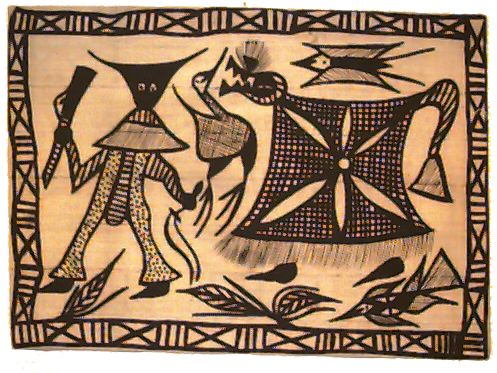
Sunday, March 16 9:00 - 10:00 AM Language Resource Center, Kohlberg 326
LRC Planning: The Swarthmore Experience George Moskos, Mary Hasbrouck and Michael Jones Swarthmore College recently opened a new LRC after a year of planning. A panel of faculty and staff will review the process of designing, funding and installing the lab.10:00 - 10:30 AM Scheuer Room
Second Language Study Committee Planning for new Lab Facilities Robin Lawrason, Temple University. Session reviews language lab planning in context with overall university level Teaching and Learning Technology Planning ongoing at Temple Uni versity. AAHE has inspired the development of Teaching Learning Tech nology Roundtables at colleges around the country. The Temple Technol ogy Roundtable issued guidelines for technology plans for colleges and departments, and reviews School and College technology plans. The im portance of planning individual facilities such as language labs within an overall institutional context is stressed.10:45 - 11:30 AM Scheuer Room
Equipment Replacement: Planning for Obsolescence Wendy Baker Davis, Kathleen Lewis, Michael Jones Panel discussion on aging technology in the context of experiences at Franklin & Marshall, Haverford and Swarthmore. How do you run software on older machines? How do you deal with maintenance and repair? Can you secure a budget for timely replacement of equipment?11:30 - Noon Scheuer Room or Kohlberg 318
NEALL Business Meeting and ElectionsNoon - 1:00 PM Bond Memorial Hall
Lunch1:15 - 4:00 PM Haverford College
Visit to Haverford College Language Learning Center Kathleen Lewis, LLC director at Haverford College Haverford is a small liberal arts college located about 20 minutes north of Swarthmore. It installed a state of the art Language Learning Center two years ago and Kathy has agreed to host any particpants interested in tour ing the Haverford LLC. We'll arrange car pools for transportation. Please indicate your interest at registration.
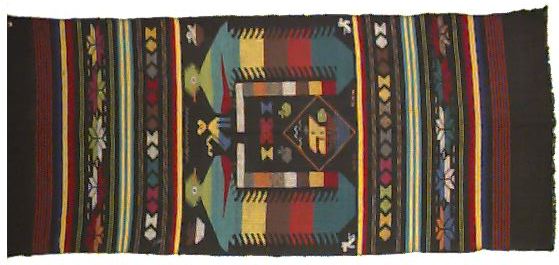
Acknowledgements
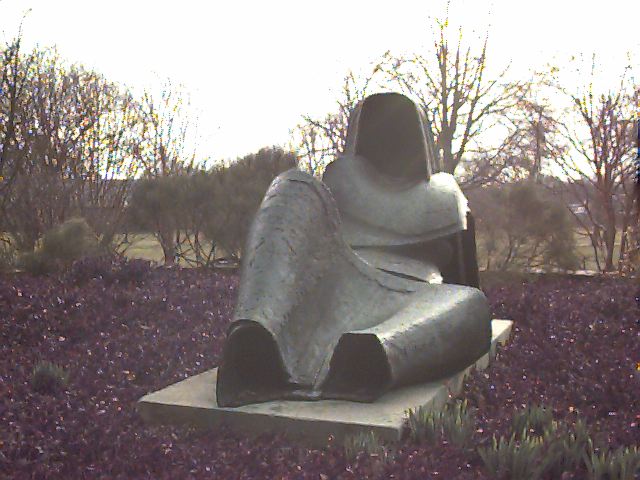
NEALL Business Meeting
Minutes
March 16, 1997
Swarthmore College
A. He encouraged everyone to attend FLEATIII at the Univ. of Vancouver Aug. 12-16, 1997.II. Wendy Baker Davis read the minutes of the NEALL '95 Business Meeting.
B. He thanked Michael Jones for hosting this conference
A. Minutes of the 1995 Business Meeting were approved.
B. She presented NEALL's financial report as of 3/12/97. It was approved.
III. Robin Lawrason spoke about Robert Henderson's early contributions to NEALL and described our $250 contribution to the Robert Henderson Memorial Fund. IV. Plans for next NEALL conference
A. It was debated whether our next NEALL Conference should be held in the Fall or Spring.
1. Spring Break is a good time for someB. Related issues were also discussed
2. IALL is usually held sometime after Memorial Day
3. North East Conference is held in April
4. A suggestion was made to hold two conferences - one in the Philadelphia area just for the day, one in the Pittsburgh area just for a day.
5. Attendance at this conference was 55 people. Attendance at the last Fall Conference was close to 80 (due to high school invitations).
6. It was decided to hold the next NEALL Conference in the spring of 1998, sometime around March 13-15, with the actual dates dependent on the host.
1. Lots of Grad students came this timeC. Next NEALL location
2. When it is held in the East , we get a bigger attendance
3. We should serve more people. Outreach to states further south.
4. It would be nice to have recruiting for NEALL at the Northeast Conference
1. Jay Carney had suggested Hartwick College in Oneonta, NY. Director there is Mireille Vandenheuvel.D. Conference Charges
2. Sister Lorraine Bruno expressed interest in hosting a future NEALL Conference at Immaculata College
3. Jen Carothers said she would check with Mike Ledgerwood about the possibility of hosting at Stony Brook (Long Island)
4. It was agreed the conference should be held in a different region - preferably in upper-state New York
1. There was general agreement that we should retain a one-day conference fee and a special price for grad students.E. Elections/Vacancies
2. Robin suggested we build the price of membership right into the conference registration. We would also offer the choice of membership only for those who don't attend the conference.
3. There was some discussion about the usefulness of an Institutional Membership 4. The actual fees would depend on the expenses at the host institution, however the following fee schedule was given as an example:$45 Entire Weekend
$20 Grad students (Entire Weekend)
$30 One-Day Only
All of the above include membership $5-$10 Membership Only
1. In rereading the NEALL Constitution the board became aware of several things:
a. The President has the right to appoint the Vice President due to a vacancy. Robin decided to waive this and to hold the election for Vice President at the same time as our normal elections for President and Treasurer.2. There was general agreement that we could proceed with elections for the entire board in Early Fall to be announced at the NEALL Conference in Spring 1998. 3. We received 3 nominations for the position of Vice President: Lydia Tarnavsky from Siena College, Mary Beth Barth of Hamilton College, and Mike Jones of Swarthmore College.
b. The job of soliciting nominations and sending ballots out to members a month in advance of the yearly conference falls to the Past-President. If Dale Lally is not interested in conducting the elections, it falls to Mary Ann Lyman-Hager, the past-past president. Results of the election are announced at the annual business meeting.
fresh ginger, about 2 inches long 1 inch wide peeled and chopped
6 tbl. Vegetable oil
1/4 tsp ground turmeric
1/2 fresh green chili (optional), washed and sliced very fine
3 tbl chopped cilantro (coriander greens)
1 tsp ground cumin
2 tsp ground coriander
1 1/4 tsp garam masala
2 tsp. Fresh lemon juice
1 tsp. Salt Wash and trim the green beans. Slice into fine rounds, 1/8 to 1/4 inch thick. Set aside in a bowl. Put the ginger in the blender with 3 tablespoons of water and blend at high speed until it is a smooth paste. Heat the oil in a 10 inch skillet over medium heat. While heating, pour in the paste from the blender and add turmeric. Fry, stirring constantly, for 2 minutes, then add the green chilies and cilantro. After another minute add the green beans and continue cooking and stirring for about a minute. Add the cumin, coriander, 1 tsp of the garam masala, lemon juice, salt and 3 tbl. Of warm water. Cover skillet, turn flame to very low and let the beans cook slowly for about 40 minutes stirring every 10 minutes or so. These beans can easily be cooked in advance and reheated. Serve them in a warm dish, with 1/4 tsp garam masala sprinkled on top.
Chocolate Almond Biscotti
Makes about 60 Biscotti 1 1/2 cups almonds (coarsely chopped)
2 2/3 cups sifted all-purpose flour
1/2 cup unsweetened cocoa powder
2 tbl. Plus 1 tsp instant espresso powder
1 1/2 tsp baking soda
1/2 tsp salt
6 oz. Bittersweet or semi sweet chocolate (chopped)
4 large eggs
1 1/2 tbl. Coffee-flavored liqueur or brandy
1 1/2 tsp. Vanilla extract
1 1/2 cups granulated sugar
3 tbl confectioner's sugar for sprinkling Preheat the oven to 325 degrees. Line 2 large baking sheets with parchment paper. Toast the almonds on a small baking sheet for about 6 minutes, or until golden. Leave the oven on. In a medium bowl mix the dry ingredients (except confectioner's sugar). In a mixer, beat the eggs, coffee liqueur and vanilla until combined. Add the dry ingredients and mix at low speed just until blended. The dough will be very stiff. Mix in the toasted almonds. Sprinkle the confectioner's sugar onto a work surface. Divde the dough into 6 equal pieces. On the work surface shape each piece into a 12 inch log about 1 1/2 inches wide. Transfer to the prepared baking sheets about 3 inches apart. Bake in the upper and lower thirds of the oven for about 35 minutes, switching the pans halfway through baking, until the tops spring back when lightly touched. Let cool on the baking sheets for 15 minutes. Lower the oven to 300 degrees. Carefully tranfer one log to cutting board. Cut the log diagonally into 1/2 inch slices. Arrange the slices on the baking sheet, cut sides down. Repaeat with tht eremaining logs. Bake biscotti for about 17 minutes, switching the pans halfway through baking until dry; the slices don't need to be turned. Let cool completely on the baking sheets. (Biscotti can be frozen for up to a month in airtight containers)
Broiled Chicken Strips serves 6-8 3 lb skinned, boneless breast of chicken Marinade
5 tbl vegetable oil
4 tbl red wine vinegar
1 medium onion, peeled and chopped
1 whole head of garlic (each clove peeled and chopped)
1 inch cube fresh ginger, peeled and chopped
2 tbl whole fennel seeds
2 tbl ground cumin
2 tsp ground coriander
seeds from 8 cardamom pods
1 tsp ground cinnamon
8 cloves
20 black peppercorns
1/2 - 3/4 tsp cayenne pepper (spices are for mildly hot dish)
2 tsp salt
3 tbl tomato sauce
Combine all ingredients needed for the marinade in the container of an electric blender. Blend at high speed until you have a smooth paste. Wibpe all the chicken pieces thoroughly dry. Divide breasts in two sections then cut each section into strips that are 1 1/2 to 2 inches long and about 1/2 inch wide. In a bowl combine the chicken and the marinade. Mix well. Cover and refrigerate 4 to 5 hours. Preheat the broiler. Line a baking tray with aluminum foil Spread the chicken (most of the marinade will cling to it) thinly on the tray. You'll need to do this in two batches. When the broiler is heated, put in the tray with the chicken. Broil for about 10 minutes. Turn and broil another 5 minutes, or until the chicken is lightly browned. Serve the first batch and start the second.
Strata 9 eggs
3 cups milk
2 tbl white wine
9 thick slices buttered bread, crusts off
1 lb mushrooms, sliced and sauteed
1/2 lb grated swiss cheese
1/2 lb grated sharp cheddar Cut bread slices into cubes. Beat eggs well in a large bowl. Add milk, wine, a dash of salt and freshly ground pepper. Layer bread cubes, mushrooms and cheese in a buttered 9 by 13 inch pan. Cover and refrigerate overnight. Preheat oven to 325 degrees. Bake for 25 minutes. Turn heat down to 300 degrees. Continue baking 30-45 minutes more. (Strata will puff up, and be a golden brown. Test with a toothpick to see if it's done)
Green Lasagna (Food and Wine, October 1994)
serves 10
This recipe is long, and looks complicated, but if you make the meat (or mushroom) sauce ahead of time and buy the fresh pasta, you shouldn't find it too much of challenge. Balsamella 6 tbl unsalted butter
1/2 cup unbleached all-purpose flour
4 cups milk
salt and freshly ground pepper
freshly grated nutmeg To make the balsamella: Melt the butter in a heavy medium saucepan until frothy. Add the flour and stir over moderately low heat without coloring for 5 minutes. Remove from the head and set aside. Bring the milk just to a boil in a medium saucepan. Return the butter and flour mixture to the heat and quickly add the hot milk, stirring constantly in the same direction with a wooden spoon to prevent lumps from forming. Bring to a boil over moderate heat, stirring, and simmer for 4 minutes. Season with salt , pepper and nutmeg. Let cool, whisking occasionally, then press a piece of buttered was paper against the surface to prevent a skin from forming.
Meat Sauce 1 oz dried porcini mushrooms
3 tbl olive oil
1 large red onion, finely chopped
1 large celery rib, finely chopped
1 medium garlic clove, minced
1/2 cup fresh flat-leaf parsley, finely chopped
1 medium skinless boneless chicken breast half, pounded 1/4 inch thick
1/2 lb lean ground beef
1/2 lb lean ground pork
1/2 cup red wine
2 cups Beef Broth, preferably homemade
1 tbl tomato paste
salt and freshly ground pepper
1/2 lb prosciutto or boiled ham, finely chopped
freshly grated nutmeg This is the Food and Wine Recipe for a meat sauce, which is very good. To make this a vegetarian dish, I substituted a reduced vegetable stock for the beef broth and various kinds of mushrooms (crimini, button, portobella) for the meat. In a medium bowl, soak the porcini in 1 1/2 cups of luke warm water until softened, about 30 minutes. Meanwhile, heat the olive oil in a large nonreactive saucepan. Add the onion, carrot celery, garlic and parsley and cook over moderate heat, stirring occasionally, until the onion is translucent, about 8 minutes. (If using mushrooms add them too) Add the chicken breast and cook, turning once until opaque throughout, about 3 minutes per side. Remove the chicken from the pan, finely chop it and transfer to a small bowl. Add the ground beef and pork to the vegetables in the pan. Cook over moderate heat, breaking up the meat with a wooden spoon, until cooked through, about 8 minutes. Add the wine and simmer until almost evaporated, about 5 minutes. Stir in 1 cup of the Beef Broth (or vegetable stock) and the tomato paste. Lower the heat and simmer gently for 15 minutes. Drain and rinse the porcini; trim off any tough bits and discard. Stir the porcini into the sauce along with the chicken and the remaining 1 cup Beef Broth. (If making a mushroom lasagna I would reduce the soaking liquid and add this in place of some of the vegetable stock. Remember to watch for any sand which may have settled to the bottom of the soaking liquid, before reducing.) Bring to a gentle boil and simmer over moderate heat until thick, about 10 minutes. Stir in the prosciutto and cook for 1 more minute. Season with salt and pepper. Bring to a gentle boil and simmer over moderate heat until thick, about 10 minutes. Stir in the prosciutto and cook for 1 more minute. Correct seasoning with salt, pepper and a pinch of nutmeg. Let cool. (The meat sauce can be refrigerated, covered, for up to 2 days.) Cheese
1 3/4 cups shredded mozzarella (about 1/2 lb)
1 1/2 cups freshly grated Parmigiano-Reggiano cheese (about 5 oz.) (You could certainly add a third cheese (a blue cheese for instance) if you like)
Spinach Pasta: Below is a recipe for spinach pasta, but local folks take note: you can buy fabulous sheets of fresh spinach (and other) pasta at Tallutos, 944 S. 9 th St in the Italian market. salt
3/4 lb fresh spinach, stemmed
4 cups unbleached all purpose flour
4 extra-large eggs
3 tbl. Plus 1 tsp. Olive oil
To make spinach pasta: Bring a large pot of water to a boil and add salt. Add the spinach and cook until very tender, about 10 minutes. Drain, rinse and squeeze dry. Finely chop the spinach; you should have 1/4 (packed) cup. Mound the flour on a work surface and make a well in the center. Add the eggs, spinach, 1 tbl plus 1 tsp. of olive oil and 1/4 tsp salt. To the well and mix with a fork. Gradually draw the flour from the inner rim of the well until almost half has been incorporated. Begin kneading in the remaining flour; using the palms of your hands, continue kneading until the dough is smooth. Cut the pasta dough into 4 equal pieces of dough covered with a clean kitchen towel. Flatten the dough and dust it lightly with flour. Roll it through a pasta machine set on the widest setting. Fold the dough in thirds, press down, flour lightly and continue rolling the dough through the machine until the dough is very smooth. Lower the setting one notch and repeat the process, rolling the dough once through successively narrower settings, until you reach the thinnest one. Drape the pasta sheet flat on clean kitchen towels. Roll out the remaining pieces of dough in the same way.
Assembly Bring a large pot of water to a boil and add salt. Fill a large bowl with cold water and add the remaining 2 tablespoons of olive oil. Meanwhile, using a large knife, cut the sheets of pasta crosswise into 5-inch lengths. (If you buy sheets they can be used whole) Drop the pasta several sheets at a time into the boiling water for 5 seconds. Transfer to the bowl of cold water to cool. Drain on a damp kitchen towel. Repeat with remaining pasta. Generously butter a 9 by 13 inch glass or ceramic baking dish. Spread 1 heaping tablespoon of the Meat sauce in the bottom of the dish. Cover the bottom and sides of the dish with slightly overlapping pasta squares, allowing about 1 inch to hang over the edge of the dish. Combine the cheeses and sprinkle one-third of the cheese over the pasta. Cover with another layer of pasta and spread one-third of the balsamella on top. Add another layer of pasta squares and cover with half of the Meat sauce. Continue layering the pasta, alternating the cheese, balsamella and Meat sauce, ending with a layer of balsamella covered with pasta. Fold the overhanging pasta over the top of the lasagna. (The lasagna can be assembled 1 day ahead, covered and refrigerated. Uncover and let stand at room temperature for 1 hour before baking.) Preheat the oven to 375 degrees. Cover the lasagna loosely with foil and bake for 25 minutes. Uncover and bake for 30 minutes longer, until the lasagna is heated through and the top is lightly browned. Let cool for 15 minutes before serving.